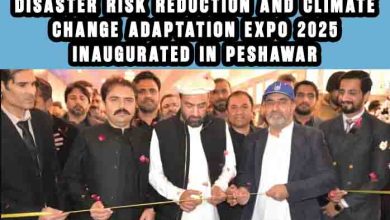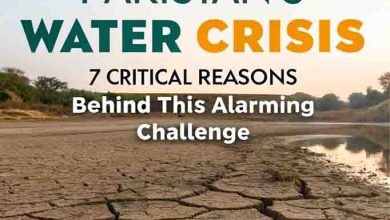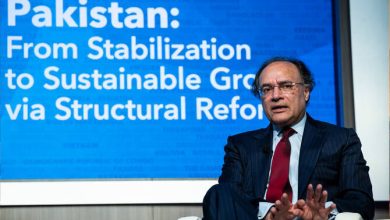7 Shocking Facts About Climate Change and Monsoon Rainfall in Pakistan | Deadly Reality
Discover 7 shocking facts about climate change and monsoon rainfall in Pakistan. Learn how deadly floods, vulnerability, and adaptation needs are reshaping the country’s future.
Climate change and monsoon rainfall in Pakistan have become inseparable forces shaping the nation’s future. While the South Asian monsoon delivers essential rain for crops and water resources, it also brings catastrophic floods and destruction.
In 2022, abnormal monsoon patterns caused Pakistan’s deadliest floods in decades—affecting 33 million people and displacing millions of families. The tragedy highlighted an undeniable truth: climate change is intensifying monsoon extremes, and Pakistan is paying the price despite contributing less than 1% of global greenhouse gas emissions.
This article uncovers 7 shocking facts about climate change and monsoon rainfall in Pakistan, revealing both the deadly reality and urgent path forward.
The Deadly 2022 Floods
The 2022 monsoon floods were more than a natural disaster—they were a deadly wake-up call.
- Infrastructure destroyed: Roads, bridges, and entire villages were washed away.
- Agriculture lost: Over 2 million acres of crops were submerged, triggering widespread food insecurity.
- Economic collapse: The damages exceeded \$30 billion, worsening Pakistan’s fragile economy.
- Lives lost: More than 1,500 deaths shocked the global community.
Read more about Pakistan’s flood impact in UN OCHA reports.
Extreme rainfall events like these are becoming more frequent, raising alarms that climate change is supercharging monsoon patterns in Pakistan.
Forecasting Monsoon Rainfall
Pakistan’s climate revolves around the South Asian monsoon, which generally arrives between April and September. While essential for farming, unpredictable rainfall brings deadly floods.
In May 2022, scientists predicted unusually heavy rains—proving that early warnings can save lives. Seasonal climate forecasting, if scaled up, could transform disaster preparedness across the nation.
“Seasonal forecasts help us see how much climate change may alter rainfall outcomes. That insight is crucial for resilience.” – Dr. Antje Weisheimer, University of Oxford.
The Science of Forecast-Based Attribution
Attribution science investigates whether a disaster would have been as severe without climate change. Traditionally, researchers relied on decades of atmospheric simulations. But now, forecast-based attribution offers new insights using seasonal weather models.
Two key scenarios were tested:
- No Climate Change World – Pre-industrial CO₂ and cooler oceans.
- Enhanced Climate Change World – Elevated CO₂ and hotter oceans.
Results showed that both natural variability (like La Niña) and global warming combined to fuel the 2022 rainfall disaster.
The Role of Natural Variability
La Niña, a natural Pacific Ocean phenomenon, played a major role in intensifying Pakistan’s 2022 monsoon. Scientists discovered rainfall was far stronger than expected in both climate models.
This means that Pakistan’s future disasters will likely be shaped by both climate change and natural variability, making adaptation far more challenging.
Pakistan’s Vulnerability and Adaptation Needs
Pakistan ranks among the top 10 most climate-vulnerable countries, despite contributing less than 1% of global greenhouse gases.
Key vulnerabilities include:
- Weak infrastructure in flood-prone regions.
- Dependence on monsoon-driven agriculture.
- Rapid, unplanned urbanization without resilient drainage systems.
- Limited financial resources for adaptation.
Adaptation priorities:
- Expand early warning systems and forecasts.
- Build stronger embankments and drainage networks.
- Support climate-resilient crops for farmers.
- Secure international climate finance to strengthen resilience.
Pakistan’s National Climate Change Policy highlights these urgent priorities.
Building Resilience: What Must Be Done
To confront the deadly link between climate change and monsoon rainfall in Pakistan, urgent reforms are needed.
- Science + Policy Integration: Forecast-based attribution should directly shape national disaster policies.
- Urban Planning Reform: Mega-cities like Karachi and Lahore must develop climate-proof drainage and water management systems. (See our related piece on Karachi’s water crisis).
- Community Preparedness: Training rural and urban populations on disaster readiness can reduce fatalities.
- Global Climate Justice: Wealthy nations must provide climate finance and support Pakistan, which suffers despite minimal emissions.
Conclusion: Turning Science into Action
The 2022 floods exposed the deadly connection between climate change and monsoon rainfall in Pakistan. While natural variability played a role, global warming amplified the catastrophe.
Pakistan must urgently adapt through:
- Resilient infrastructure
- Climate-smart agriculture
- Advanced forecasting systems
But adaptation requires global solidarity. The world cannot ignore Pakistan’s plight. Today’s tragedy is tomorrow’s warning.
If action is taken now, millions of lives can be saved, and a climate-resilient future for Pakistan can be secured.
Internal Links
- Karachi’s Water Crisis: A Climate and Infrastructure Challenge
- Pakistan’s Agricultural Vulnerability to Climate Change







